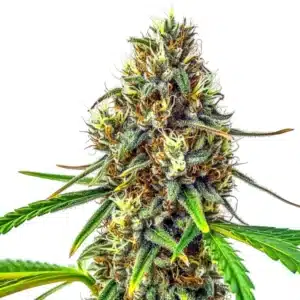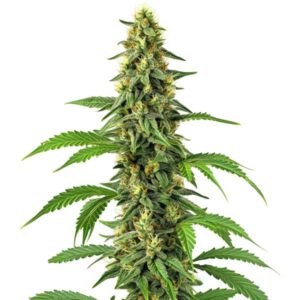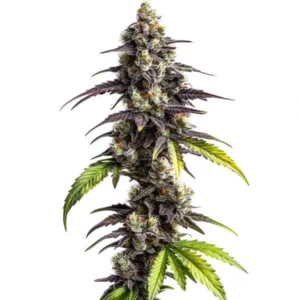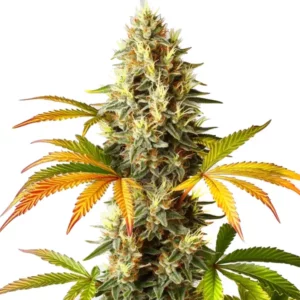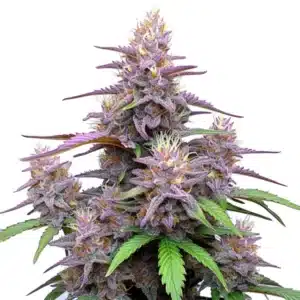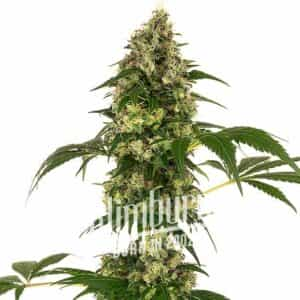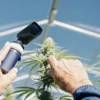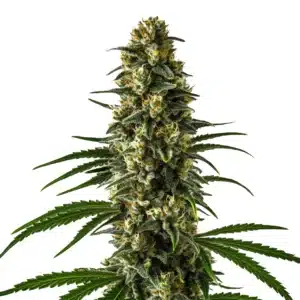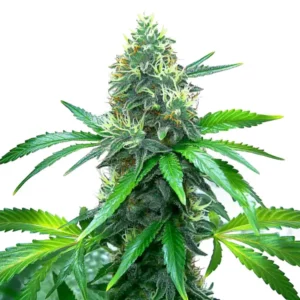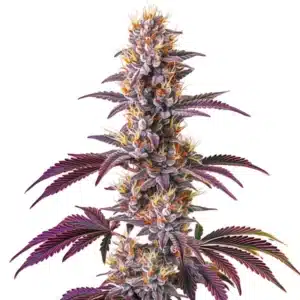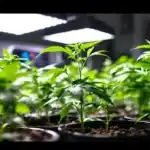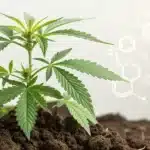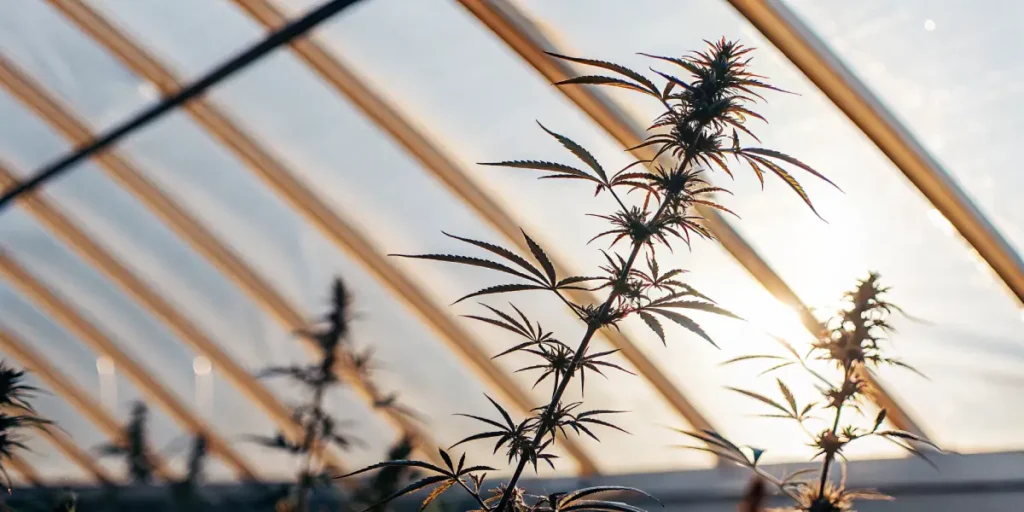
Auxin Transport and Cannabis Training
Auxin transport and cannabis training are integral to maximizing your plant’s potential. Auxins are plant hormones that influence growth patterns. By knowing how to manipulate them, you can enhance your yield and plant health.
In the world of cannabis cultivation, auxin transport is crucial. Auxins help in directing plant growth, making them essential in training techniques. When auxins are distributed unevenly, they can cause your plant to grow in unexpected ways.
Recommended Strains
24K Gold Regular
|
|
THC | 19% - 22% (Medium) |
|
|
Type | Regular |
|
|
Yield | Medium |
|
|
Phenotype | 60% Indica / 40% Sativa |
24k Gold
|
|
THC | 19% - 22% (Medium) |
|
|
Type | Feminized |
|
|
Yield | High |
|
|
Phenotype | 60% Indica / 40% Sativa |
Training your cannabis plants through techniques like topping or low-stress training (LST) can help manage auxin transport. This manipulation ensures your plants grow in a balanced and productive manner, leading to better yields and healthier plants.
Auxin Transport in Cannabis Pruning
Pruning is a common practice among cannabis growers. When you prune, you’re essentially cutting away parts of the plant to encourage growth elsewhere. Auxin transport in cannabis pruning plays a key role here.
By removing the top growth, you disrupt the usual auxin flow. This encourages lateral growth as the plant redistributes auxins to other areas. Strains like Power Plant react well to this technique, resulting in a bushier plant.
Knowing auxin transport in cannabis pruning allows growers to strategically trim their plants for optimal light absorption and air circulation. This strategic approach not only enhances the structural integrity of the plant but also helps in managing space effectively, especially in indoor growing environments.
Regular pruning, guided by the principles of auxin transport, helps maintain a healthy and vigorous growth cycle. By carefully observing how each cut affects the plant’s hormone distribution, growers can fine-tune their pruning techniques to align with desired outcomes, such as increased bud sites and improved overall plant vitality.
Techniques for Pruning Cannabis
Effective pruning techniques involve careful planning and execution. Start by identifying which parts of your plant need to be trimmed. Focus on areas that block light or hinder air circulation.
Using clean, sharp tools is crucial. Dirty or dull tools can damage your plant and lead to infections. Once you prune, observe how your plant redirects auxins to promote new growth.
Incorporating the knowledge of auxin transport in cannabis pruning empowers growers to make informed decisions about which branches to remove. This approach not only improves plant health but also optimizes the plant’s energy focus, ensuring robust and balanced development.
With the right techniques, pruning can transform a plant’s shape and productivity. By knowing how pruning affects auxin flow, growers can achieve a more controlled and flourishing growth environment, essential for maximizing the potential of every cannabis plant.
Promos & Deals
Effects of Auxin on Cannabis Plant Training
The effects of auxin on cannabis plant training are profound. Auxins control growth direction, so manipulating them can change how your plant develops. Training techniques that alter auxin distribution can lead to impressive results.
Plants like Blue Dream benefit greatly from such training. By bending stems or using the Screen of Green (ScrOG) method, you can ensure that auxins are evenly distributed, promoting uniform growth.
The effects of auxin on cannabis plant training extend beyond just growth patterns; they influence overall plant vigor. By mastering auxin manipulation, growers can unlock the full potential of their plants, encouraging increased resilience and productivity.
Training methods that harness the effects of auxin allow for more precise control over plant shape and size, essential for maximizing the use of available space. This approach is particularly beneficial in scenarios where space is limited, such as indoor or urban growing setups.
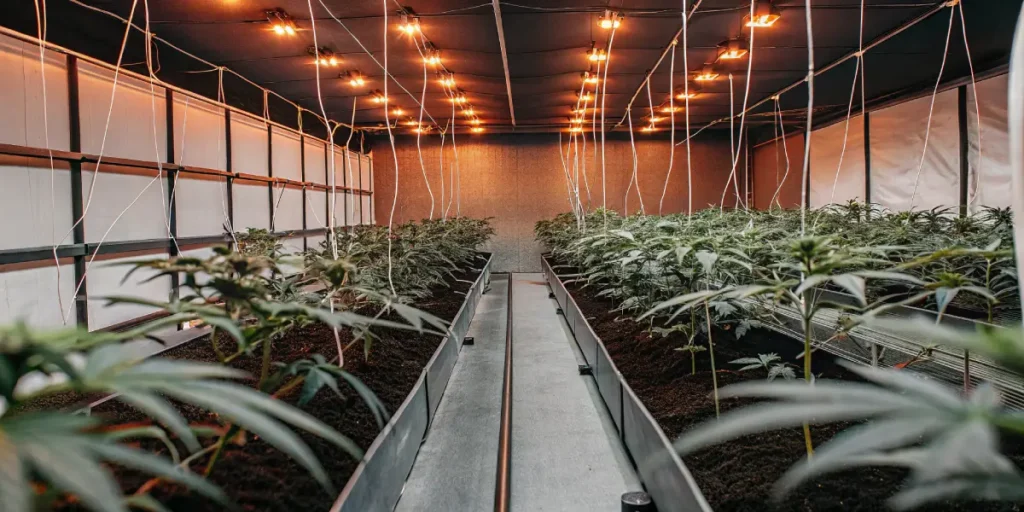
Methods to Train Cannabis Plants
Several methods are available for training cannabis plants. Low-stress training involves gently bending stems to change the plant’s shape without cutting. This encourages auxins to promote growth in the bent areas.
High-stress training, like topping, involves cutting the main stem to redistribute auxins. This technique encourages bushier growth and more colas. Both methods require patience and care to avoid damaging your plants.
Auxin transport and cannabis training methods like LST and HST are vital tools in a grower’s arsenal. These techniques, grounded in an knowing of auxin dynamics, enable growers to manipulate plant architecture for enhanced light penetration and flower development.
By integrating these methods into their cultivation practices, growers can effectively guide the growth trajectory of their plants, ensuring a harmonious balance between vertical and lateral expansion. This balance is key to achieving a productive and aesthetically pleasing cannabis garden.
Manipulating Auxin for Better Cannabis Yields
Manipulating auxin for better cannabis yields involves strategic planning and regular monitoring. By knowing auxin transport, you can apply techniques that enhance growth and maximize yield.
Strains like Gorilla Glue 4 respond well to such manipulation. By adjusting auxin flow, you can achieve a more balanced growth pattern, leading to increased flower production.
Effective manipulation of auxin transport can lead to significant improvements in yield. By carefully managing auxin distribution, growers can encourage more uniform growth, leading to an even canopy and optimal light exposure throughout the plant.
This approach not only maximizes potential yields but also enhances the quality and potency of the harvest. Through consistent auxin management, growers can ensure that each plant reaches its full potential, resulting in a rewarding cultivation experience.
Strategies for Enhancing Cannabis Growth
One effective strategy is to combine training techniques. Use topping along with LST to manipulate auxin distribution. This encourages both vertical and lateral growth, maximizing canopy exposure.
Another approach is to monitor environmental factors. Light, water, and nutrients all affect auxin levels. Adjusting these can help control how your plant grows and develops.
Auxin transport and cannabis training are at the heart of effective growth strategies. By combining various techniques, growers can create an environment that supports vigorous plant development and maximizes yield potential.
Through diligent observation and adaptation, growers can fine-tune their approach, ensuring that each plant receives the care and attention it needs to thrive. This proactive strategy leads to healthier plants and more bountiful harvests.
Auxin Role in Cannabis Stem Bending Techniques
Auxin plays a crucial role in cannabis stem bending techniques. When you bend stems, auxins are redistributed to promote growth in specific areas, allowing for better light exposure and increased yields.
Stem bending techniques like LST are popular because they’re non-invasive. These methods do not harm the plant and allow for gradual adaptation to the new growth patterns.
The auxin role in cannabis stem bending techniques is essential for achieving a balanced and productive plant structure. By knowing how auxin influences growth, growers can effectively use bending techniques to shape their plants for optimal light reception.
These techniques offer a gentle yet powerful way to guide plant development, ensuring that every part of the plant benefits from available resources. This approach leads to a healthier plant and a more rewarding cultivation experience.
Implementing Stem Bending Techniques
Begin by identifying areas that require more light. Gently bend the stems in those directions. Use soft ties or plant tape to hold the stems in place without damaging them.
The key is to be gentle. Rapid or forceful bending can break stems and cause stress. Over time, the plant will adapt to the new shape, leading to a more even canopy.
Successful implementation of stem bending techniques relies on an knowing of auxin transport and cannabis training principles. By carefully bending stems, growers can direct growth and ensure that light reaches lower branches, boosting overall plant productivity.
Regular monitoring and adjustment are crucial for maintaining the plant’s health and structure. By staying attentive to the plant’s needs, growers can ensure a thriving garden that benefits from the strategic use of auxin management techniques.
Enhancing Cannabis Growth Through Auxin Management
Enhancing cannabis growth through auxin management involves knowing how to control and distribute auxins effectively. By doing so, you can guide your plants to grow in a way that maximizes both health and yield.
Auxin management is about balance. Too much or too little can lead to uneven growth and decreased yields. Regular monitoring and adjustment are essential.
Auxin transport and cannabis training are key components of a successful growing strategy. By mastering auxin management, growers can achieve a harmonious balance between plant health and productivity, leading to more consistent and abundant harvests.
Through careful observation and adaptation, growers can tailor their approach to meet the unique needs of each plant, ensuring a thriving garden that flourishes under their care. This proactive approach is essential for maximizing the potential of every cannabis plant.
Best Practices for Auxin Management
One best practice is consistent monitoring of your growing environment. Factors like light, temperature, and humidity can influence auxin levels. Adjusting these factors can help maintain balanced auxin distribution.
Another practice is regular training and pruning. These techniques directly influence auxin transport, allowing you to control plant shape and growth patterns.
Effective auxin management requires a deep knowing of how environmental factors affect plant growth. By maintaining optimal conditions, growers can ensure that auxin levels remain balanced, promoting healthy and vigorous development.
Regular training and pruning are essential components of a successful cultivation strategy. By incorporating these practices into their routine, growers can harness the power of auxin transport and cannabis training to achieve a flourishing and productive garden.
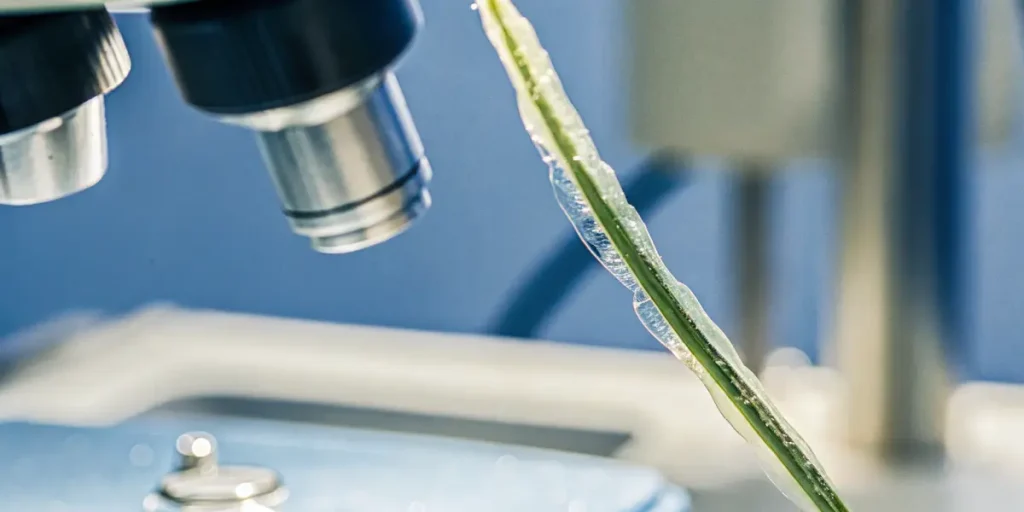
FAQs About auxin transport and cannabis training
What is auxin transport in cannabis pruning?
Auxin transport in cannabis pruning refers to the movement of auxins, or plant growth hormones, within the plant. When you prune, you cut away parts of the plant, redirecting auxin flow to encourage growth in other areas. This process is essential for promoting bushier growth and maximizing light exposure.
By knowing auxin transport, you can strategically prune your cannabis plants to enhance their structure. This leads to healthier plants and potentially increased yields. Pruning techniques that consider auxin transport can be especially beneficial for strains known for their vigorous growth, like Power Plant.
How do effects of auxin on cannabis plant training improve yields?
Auxins influence the direction and growth of plant tissues. When you train cannabis plants, you manipulate auxin distribution to guide growth patterns. This manipulation encourages more balanced growth, enhancing light exposure and increasing potential yields.
Techniques such as low-stress training (LST) and high-stress training (HST) take advantage of auxin effects. By carefully planning how auxins are redistributed, you can optimize the growth of strains such as Blue Dream for better yields and healthier plants.
What are the benefits of manipulating auxin for better cannabis yields?
Manipulating auxin for better cannabis yields allows you to control plant structure and growth direction. This results in a more even canopy, improved light penetration, and increased flower production. Auxin manipulation can significantly impact overall plant health and yield potential.
By applying techniques that adjust auxin flow, you can enhance the growth of robust strains like Gorilla Glue 4. This approach leads to more efficient use of resources and maximizes the plant’s productive capacity.
How does auxin role in cannabis stem bending techniques affect growth?
Auxin plays a critical role in cannabis stem bending techniques by directing growth responses. When you bend a stem, auxins accumulate in specific areas, promoting growth where it’s needed most. This leads to a more uniform plant structure and optimized light absorption.
Stem bending techniques, such as those used in low-stress training, are effective because they subtly alter auxin distribution without harming the plant. This approach allows for gradual adaptation and more controlled growth, benefiting the plant’s overall development.
What are the key strategies for enhancing cannabis growth through auxin management?
Enhancing cannabis growth through auxin management involves several strategies. Monitoring environmental factors like light, temperature, and humidity is crucial, as these can affect auxin levels and plant growth. Adjusting these factors helps maintain balanced auxin distribution.
Another strategy is the combination of training and pruning techniques. These methods directly influence auxin transport, allowing you to tailor plant growth to your desired outcomes. Knowing the specific needs of your chosen cannabis strain is also essential for effective auxin management.


